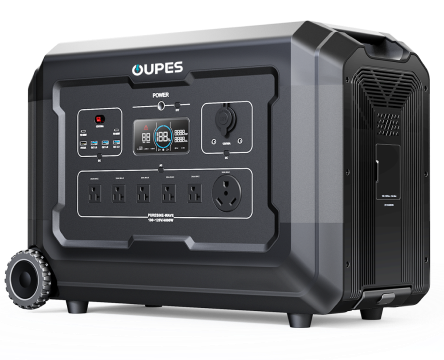
Staying cool during the summer or while living off-grid is not a luxury—it’s a necessity. But powering an energy-intensive appliance like an air conditioner can be a challenge when you’re away from the grid. That’s where portable power stations come in. Whether you're camping, traveling in an RV, or preparing for extreme weather events, matching your AC unit with the right power station ensures reliable comfort when you need it most.
Understanding Air Conditioner Power Requirements
Before choosing a power station, it's essential to evaluate how much energy your air conditioner consumes. Most portable AC units typically require between 700 to 1,500 watts during operation, with startup surges potentially reaching double the running wattage due to compressor demand.
To determine compatibility, pay attention to the following electrical specs:
- Continuous output (watts): Must exceed your AC's rated running power.
- Surge capacity: Must cover the startup spike.
- Voltage and amperage: Ensure your AC unit and power station share the same requirements (typically 120V or 240V).
- Duty cycle: How often the AC runs in a given cooling cycle affects battery draw over time.
For instance, if your air conditioner consumes 1000W and your power station offers 1000Wh capacity, you might expect about one hour of runtime under ideal conditions. However, factoring in inverter efficiency losses (usually 10–15%), the actual runtime may be slightly shorter.
Choosing the Right Portable Power Station Capacity
Battery capacity, measured in watt-hours (Wh), is critical when running appliances with high energy demands. Here's a quick reference guide:
| AC Unit Power (W) | Recommended Station Capacity (Wh) | Estimated Runtime |
|---|---|---|
| 800W | 1000Wh+ | ~1 hour |
| 1200W | 1500Wh+ | ~1 hour |
| 1500W | 1800Wh+ | ~1 hour |
For longer usage—such as overnight cooling—you'll need a station with a capacity of 1800Wh or more, or one that supports solar recharging during the day.
Safety Considerations When Running an AC Unit
Running an AC on battery power requires care. Here are a few safety tips to ensure efficient and hazard-free operation:
- Use a pure sine wave inverter: Essential for running sensitive electronics like compressors.
- Ensure proper ventilation: Both the AC and power station generate heat and should be used in well-ventilated spaces away from direct sun exposure.
- Monitor load levels: Check your station’s display or app to ensure the AC doesn't exceed the rated output.
- Avoid plugging multiple high-draw devices at once: This could trip the overload protection.
Proper off-season storage is also important. Always store your power station fully charged in a cool, dry environment, and follow manufacturer maintenance guidelines to maximize battery life.
Charging Options and Backup Strategies
Modern power stations support multiple recharging methods, which is especially valuable during off-grid use or emergencies:
- AC wall charging: Fastest and most efficient when grid power is available.
- Solar panel input: Ideal for camping or summer use. Choose high-efficiency panels matched to your station's input rating.
- Carport charging: Useful during road trips.
- Gasoline generator (as backup): Can recharge the station when solar or grid options are unavailable.
Solar charging is particularly advantageous for air conditioning applications, given the natural overlap of sunny days and cooling needs. With high-wattage solar input (e.g., 400W+), full recharging in 6–10 hours is possible under good conditions.
Why OUPES Is a Strong Match for Air Conditioner Support
OUPES portable power stations are engineered with high-wattage output, robust surge capacity, and long-cycle LiFePO4 batteries—making them ideal for powering AC units during off-grid conditions or outages.
Key features include:
- Up to 1800W continuous output with >4000W surge
- Modular expansion batteries and solar compatibility
- Pure sine wave inverters for appliance safety
- Intuitive LCD screens and real-time monitoring
- Multiple AC, DC, and USB-C outputs
Combined with solar bundles, OUPES offers a practical, quiet, and sustainable solution for air conditioner users at home, on the road, or in the wilderness.
Conclusion
Powering an air conditioner with a portable power station is entirely achievable—as long as the right match is made between your appliance’s power draw and the station’s output and capacity. OUPES makes this process simpler by offering reliable, expandable systems that support long runtimes, safe operation, and versatile charging methods.
Whether you're preparing for summer blackouts or planning an off-grid adventure, the right power station can keep your air conditioner running smoothly—bringing cool, quiet comfort wherever you are.




























